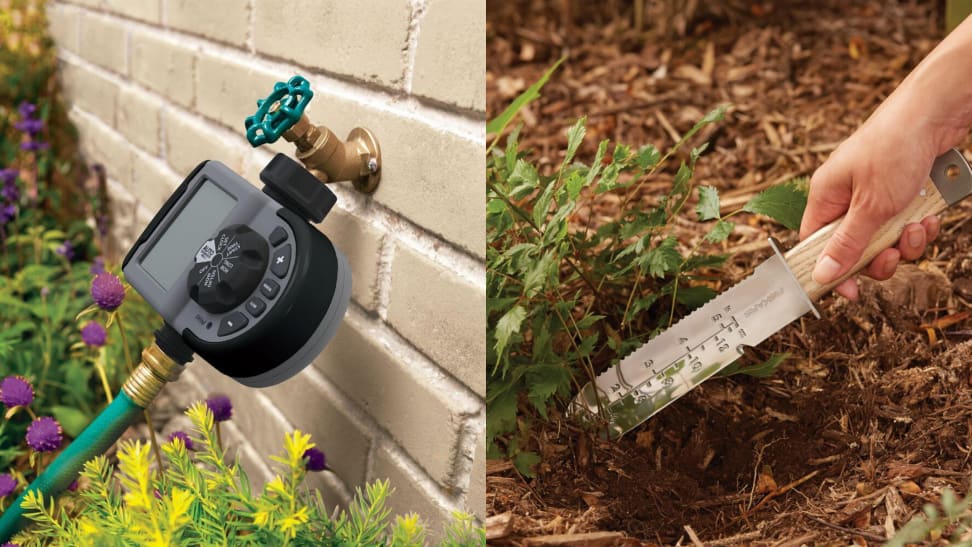 Credit:
Orbit / Fiskars
Credit:
Orbit / Fiskars
Products are chosen independently by our editors. Purchases made through our links may earn us a commission.
So you’re ready to start a garden, but all you have is a patch of dirt, or maybe just an empty space on a deck. Never fear: Here are the essentials you need to get ready to get growing.
Gardening gloves
Gardening gloves aren’t strictly essential for growing plants or maintaining your yard, but they make life a lot more pleasant.
A good pair of gardening gloves will protect your hands from getting scratched and pierced by stray thorns and rocks, and keep hard-to-scrub dirt from getting lodged under your fingernails. A great pair of gardening gloves will let you feel the roots and stems you’re trying to grasp, and protect you without being bulky or hot.
1. Nitrile-coated or nitrile-dipped cloth gloves to protect your hands
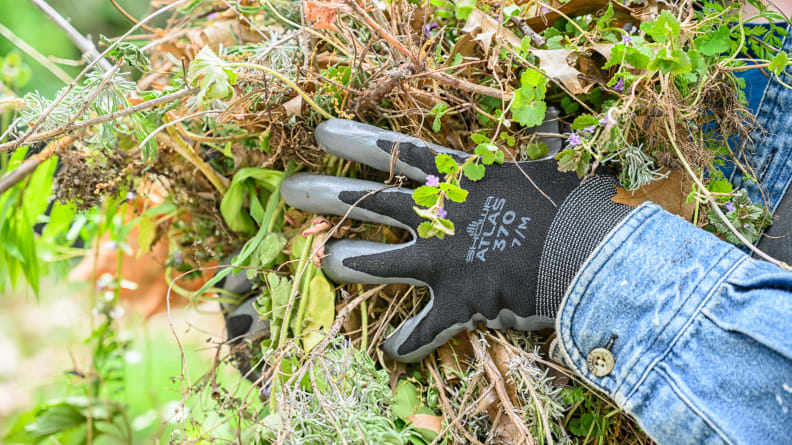
Nitrile-dipped gloves can protect your hands from the basics you will encounter in your yard.
For most garden tasks, nitrile-coated or nitrile-dipped cloth gloves are the best choice. The cloth back lets your hands breathe and stay cool (opt for cotton blends or nylon over polyester), while the nitrile palm and fingers protect your hands from most small injuries. Plus, they’re easy to clean and inexpensive enough to keep an extra pair on hand.
Nitrile, a latex-free synthetic rubber compound, won’t keep long blackberry thorns or cactus spines out of your hands, but it will protect you from accidental brushes with most rose bushes and splintering wood.
When we tested the best gardening gloves, we found the nitrile-dipped Showa Atlas 370 to be the best overall.
Get a 12-pack of Showa Atlas 370 gloves for $32
2. Durable gloves for all-day wear
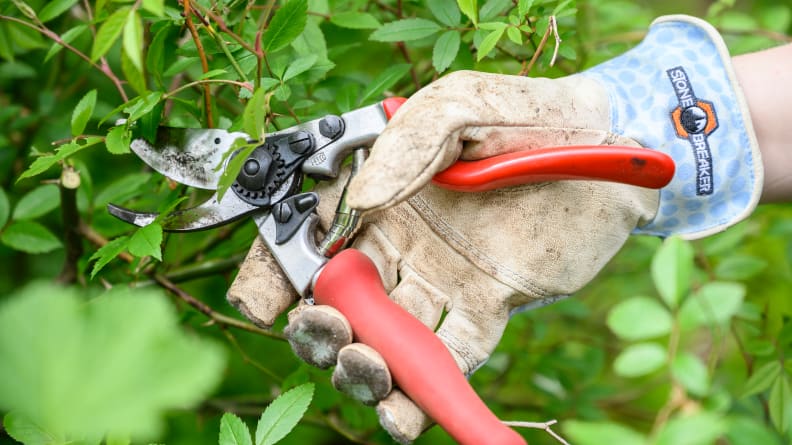
While not as water-resistant as nitrile, these gloves are durable enough to last all day through any tasks.
If you want to own just one pair of gloves, the StoneBreaker gloves, which we named “most durable” in testing, are the gloves to buy. These goatskin/fabric gloves are sensitive enough for fine weeding, but sturdy enough for grabbing thorny stems and rough-edged bricks, and they’ll keep blisters at bay during long pruning sessions. Their fingertip seams have a slim profile, and don’t interfere with fine-detail work. These gloves’ light color and breathable fabric backing keeps them cool on hot, sunny days, and the palms are water-resistant.
Get a pair of StoneBreaker for $22.49
Tools for digging
It has been said that gardening is the art of moving plants around. To do that, you’re going to need to move dirt around—here are the tools to help.
3. A soil knife, or hori hori, for digging up weeds
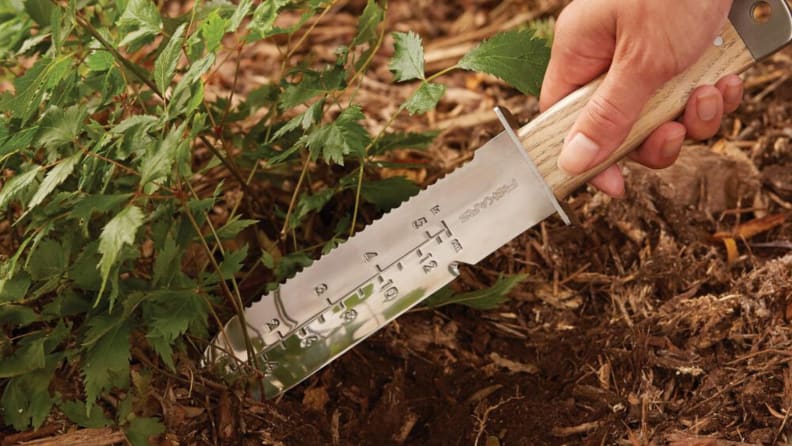
A soil knife, or hori hori, with measurements on the side can help you know just how far to dig.
The most useful type of trowel for beginning gardeners isn’t even a trowel—it’s a soil knife, also known as a hori hori. They’re a hybrid between a trowel and a knife, with a long blade that’s slightly curved to make a scoop, and serrations along one edge.
Soil knives are perfect for digging holes just the right size for plant six-packs from the garden center. They slice through thick weed roots, and are great for digging up weeds with long taproots like dandelions. You can pry up rocks, open mulch and potting soil bags, and draw garden rows for planting seeds with soil knives. Soil knives are great for precise, small-scale garden tasks.
Get the Fiskars Hori Hori Knife with Sheath for $25.90
4. A trowel for digging holes
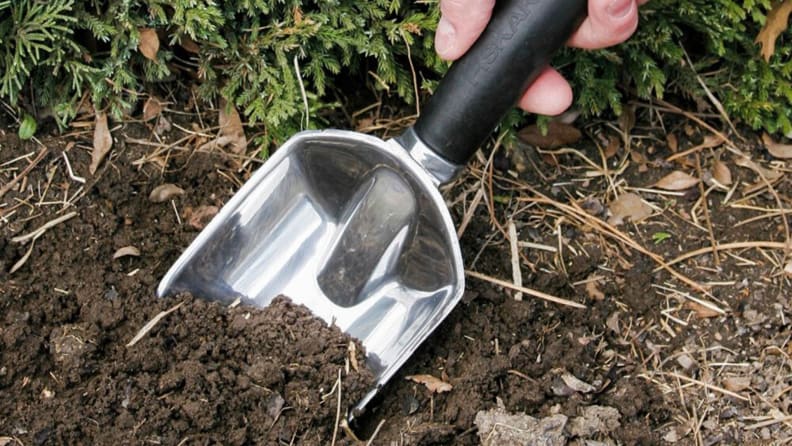
A hand trowel is ideal for digging small holes.
If you find that you’re spending time on larger garden tasks, like digging 1-foot-deep holes to plant new rose bushes, you’re going to need a bigger trowel. Look for a trowel with a wide scoop, which is great for moving loose soil, and potting soil compost, fertilizer and lime; but they’re not as good as a soil knife for penetrating hard or rocky soil.
Get the Fiskars Big Grip Hand Trowel for $7.89
5. A shovel or spade for moving bigger plants
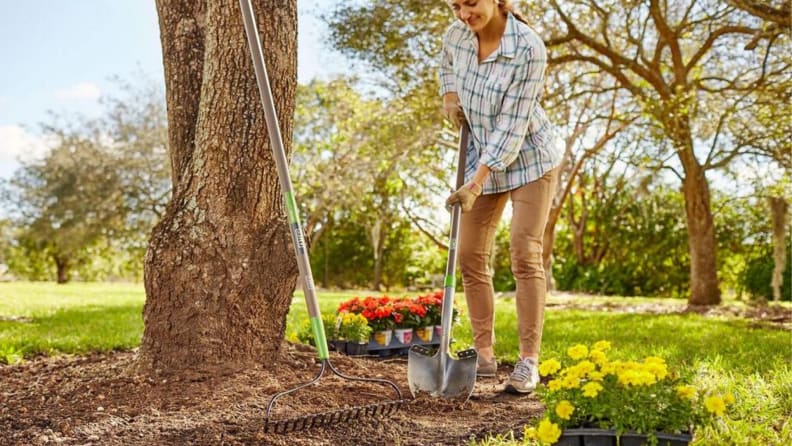
Major planting projects require a full-sized shovel.
To move bigger plants in bigger gardens, you will need a shovel. A round-headed digging shovel with a pointed blade is good for moving large amounts of soil and making wide holes. A garden spade is better for digging in confined spaces—for example, if you’re digging up a plant and don’t want to uproot other plants that are planted close by.
- Get the Craftsman 55-in Fiberglass Handle Digging Shovel at Lowe's for $29.98
- Get the Kobalt 20.5-in Steel D-Handle Garden Spade at Lowe's for $30.98
Tools for weeding
6. A hand hoe for eliminating baby weeds
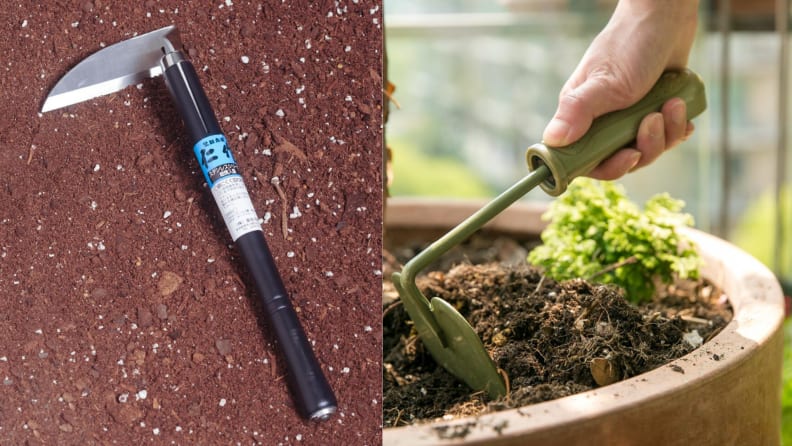
Hand hoes help eliminate weeds before they grow.
A soil knife is great for digging out weeds, but it’s easier to eliminate weeds when they’re still small. If you’re working on a small garden, a hand hoe will help you make short work of baby weeds.
Hand hoes are short handles with a sharp blade attached to the end. Simply drag the hand hoe blade through the dirt, straight through those pesky little weeds’ stems, and repeat as necessary. You can find right-handed, left-handed, and ambidextrous versions.
- Get the Nisaku NJP100 Nejiri Gama Handheld Weeder at Amazon for $13.72
- Get the DeWit Left-Hand Japanese Hand Hoe on Amazon for $32.56
- Get the Edward Tools Carbon Steel Hand Hoe at Amazon for $7.95
7. A hoe for tackling an entire patch of weeds
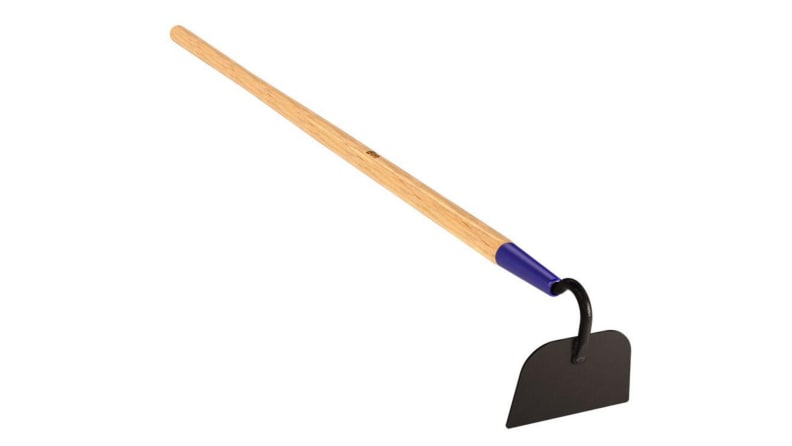
If you're working with a lot of square footage, a full-sized garden hoe is the best option.
If you’re weeding a whole cabbage patch, do yourself a favor and get yourself a hoe. You use garden hoes the same way as hand hoes; drag the blade through the top layer of soil to cut weeds off from their roots.
Get the Craftsman 54-in Fiberglass-Handle Garden Hoe for $29.98
Tools for watering
Plants need four things to survive: soil, sun, air, and water. Your yard probably comes with the first three, but you don’t always have as much water as your plants need when they need it.
8. A watering can for delicate seedlings
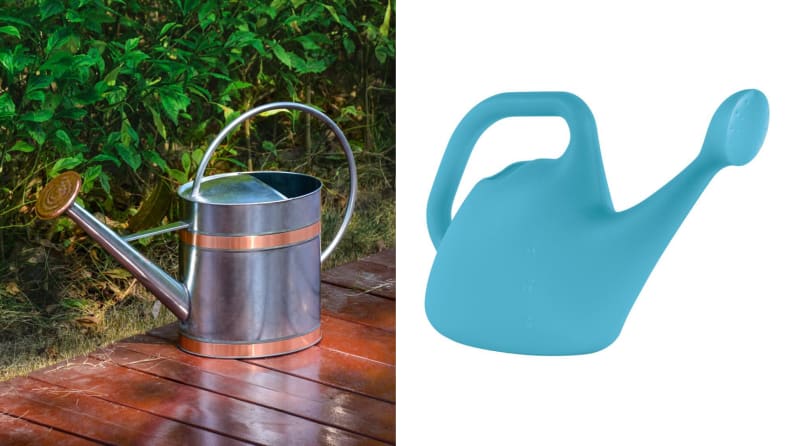
Watering cans with small holes are best for delicate seedlings.
If you’re dealing with a small garden, you can make a quick watering can by poking holes in the lid of an old milk jug. But if you’re not as handy with hot needles, you can buy a watering can. Look for a model that comes with a “rose” (removable spout with holes in it) so that you can water delicate seedlings with a gentle spray of water, and not wash them away. If you don’t have an exterior faucet, opt for a short, low-profile can that will fit under your kitchen tap.
- Get the Cesun Metal 1-gallon Watering Can at Amazon for $23.94
- Get the Bloem 1.6-gallon Watering Can at Amazon for $32.99
9. A hose for large gardens
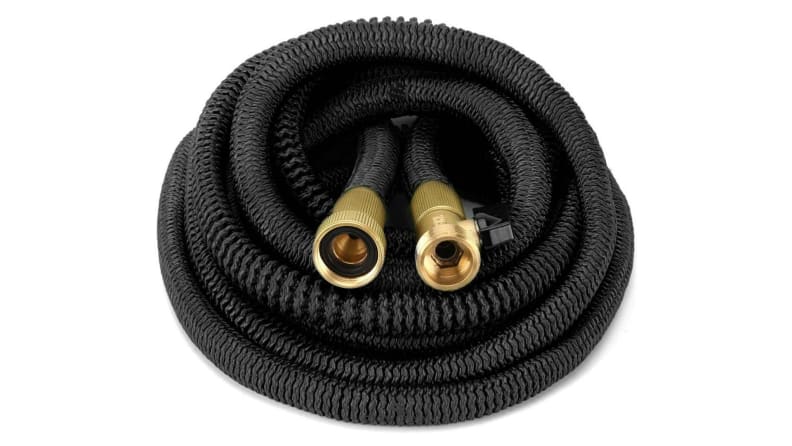
An expandable hose gives you plenty of coverage without taking up too much real estate in your yard.
Larger gardens need more water. If you’re getting a hose, buy one that’s longer than you think you need. Bending your hose around outdoor furniture, decks, large rocks, and other obstacles takes more hose length than you think. When we tested garden hoses, the GrowGreen Heavy Duty was our favorite expandable hose, reaching up to 50 feet.
Get the GrowGreen Heavy Duty Expandable Hose for $35
10. A soaker hose for gradual watering
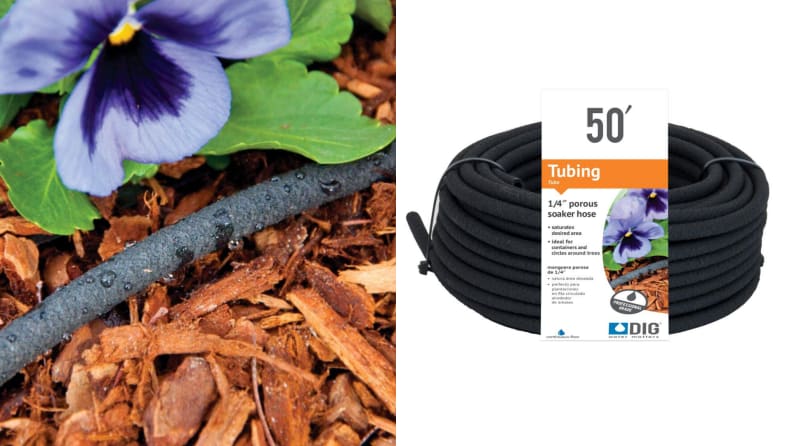
Soaker hoses can be a great option for giving plants a slow, steady stream of water.
For consistent, deep watering over a large area, opt for a soaker hose that oozes water slowly out along the length of the hose. Slow, gradual watering does a better job of penetrating the soil and reaching plants’ roots than fast spraying. You can connect a soaker hose to a regular hose if you don’t want to drip water all the way from your faucet to your garden bed.
Get the Dig Porous Drip Soaking Hose for $9.9
11. A hose timer to help automate the process
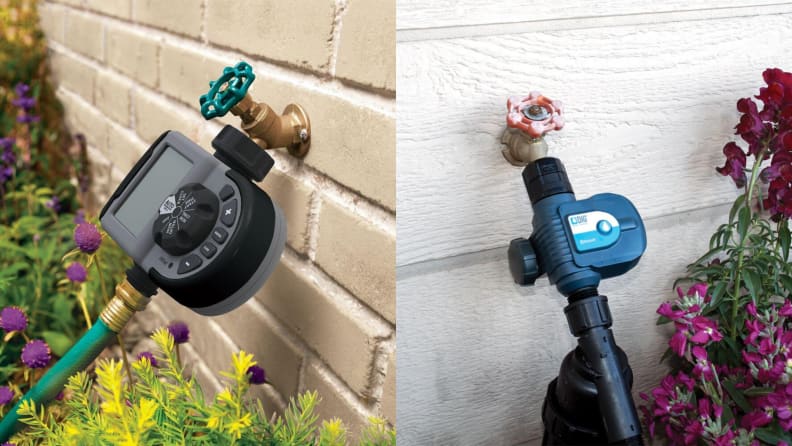
Hose timers help ensure your plants aren't overwatered.
A hose timer makes it easier to water without having to stand around holding a hose, or worrying about accidentally leaving the hose on all night. You can get a programmable hose timer to set up watering in advance, or a Bluetooth hose timer if you don’t even want to go outside.
- Get the Orbit Mechanical Water Timer at Amazon for $11.23
- Get the Orbit Programmable Hose Faucet Timer at Amazon for $51.30
- Get the Dig Bluetooth Hose Timer at Amazon for $56.10
12. A sprinkler—but only if you do your research first
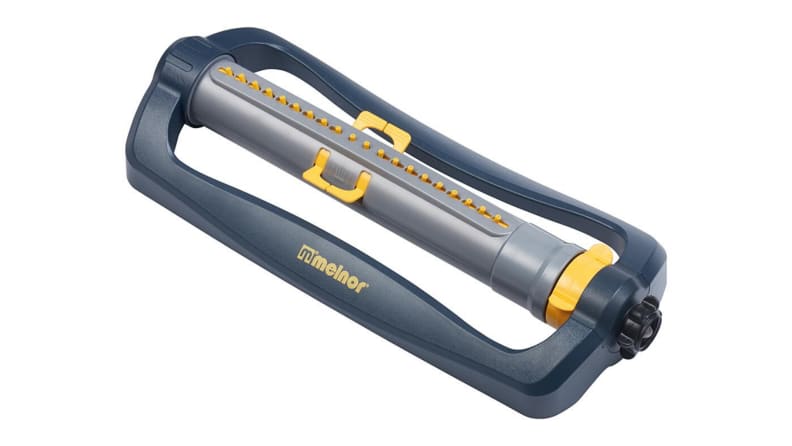
Sprinklers like this can cover hundreds of square feet, but be sure to do your homework before accidentally overwatering your plants.
Sprinklers are fun to jump in, but they don’t water very consistently. The edges of a sprinkler’s range typically get a lot less water than the middle. To measure your sprinkler’s performance, set up the sprinkler, and place empty cat food or tuna fish cans around the area, run the sprinkler for a half-hour, and compare how much water is in the cans closer and farther from the center. If they’re very different, you’re going to need to move the sprinkler around to water evenly—or get a soaker hose.
Get the Melnor Deluxe Turbo Oscillating Sprinkler for $19.97
The finishing touch
13. Fun extras to give your garden personality
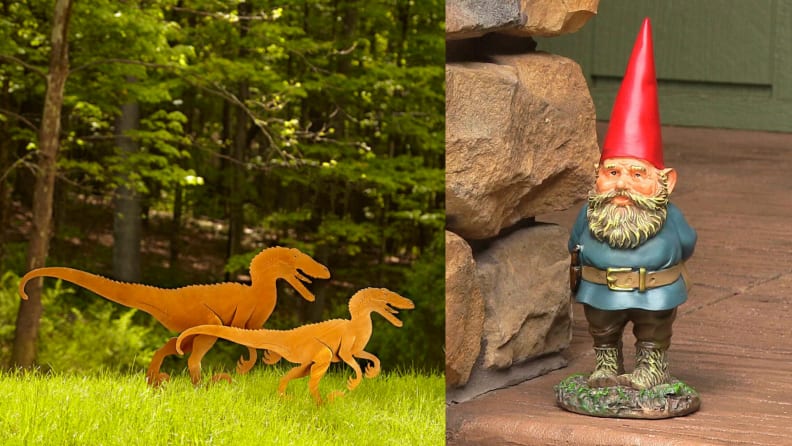
Once you have the basics covered, have some fun adding touches of whimsy to your garden.
Admit it: You’ve always wanted a garden gnome. Or Sasquatch wind chimes. Or a garden jellyfish. Or velociraptors. Your garden is an extension of your home, and your life. Have fun with it!
- Get the Sunnydaze Decor Gus the Original Gnome Garden Statue at Amazon for $32.95
- Get the DesertMetalDesign Sasquatch Windchimes at Etsy for $30
- Get the ApricotMint Glass Purple Jellyfish at Etsy for $69.99
- Get the Velociraptor Garden Sculpture Set at UncommonGoods for $180
- Get the Barbara King Dancing Bunny Garden Sculpture with Planter at QVC for $81


